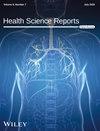Identifying Influential Theories in Human–Computer Interaction Within Health Informatics: A Systematic Review
Abstract
Background and Aims
Digital transformation in healthcare has driven the adoption of diverse health information systems, including electronic health records, mobile health (mHealth) applications, and clinical decision support tools. However, optimal interaction between users and these systems remains a challenge. The field of Human–Computer Interaction (HCI) offers theoretical frameworks to guide the design and evaluation of these technologies, enhancing usability and adoption by health professionals and patients. This systematic review aims to identify and synthesize the most frequently applied HCI theories in health informatics and examine their relevance across digital health technologies.
Methods
A systematic review was conducted following PRISMA 2020 guidelines. Three databases—PubMed, Web of Science, and Google Scholar—were searched with no date restriction. Studies were included if they applied a defined HCI theory to the context of health information technologies and were published in English. Review articles, conceptual papers, and studies without a clear theoretical framework were excluded. A total of 67 eligible studies were included in the final synthesis.
Results
The use of HCI theories in health information technology has increased notably since 2015, with a sharp rise observed after 2020. The most frequently used frameworks included the Unified Theory of Acceptance and Use of Technology (UTAUT), Technology Acceptance Model (TAM), and Social Cognitive Theory (SCT). mHealth applications accounted for most theory applications (37%), followed by hospital information systems and web-based tools. The geographic distribution revealed that the United States, the United Kingdom, and Australia produced the highest number of theory-driven studies.
Conclusions
HCI theories are vital in improving the design, usability, and implementation of health information systems. This review underscores the importance of integrating user-centered theoretical frameworks in system development and calls for broader geographic and contextual diversity in future theory-based research.


 求助内容:
求助内容: 应助结果提醒方式:
应助结果提醒方式:


